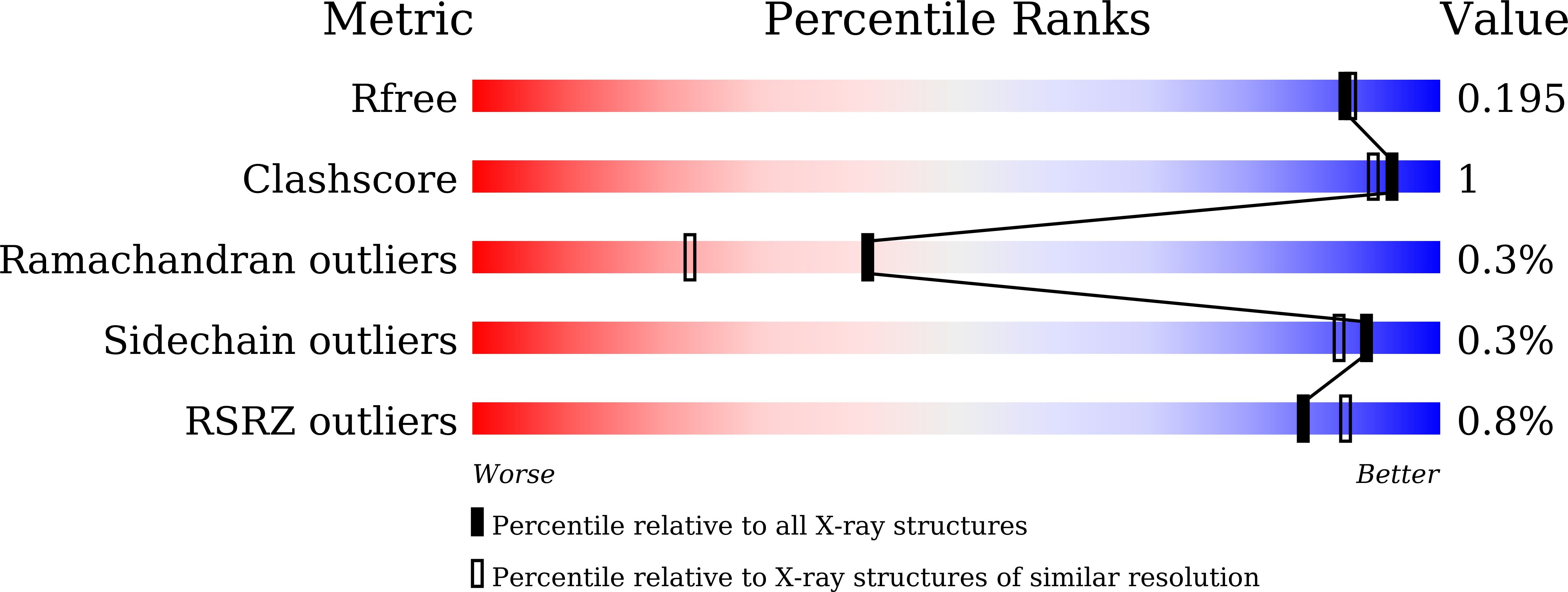Structural analysis of substrate recognition by glucose isomerase in Mn2+binding mode at M2 site in S. rubiginosus
Bae, J.E., Hwang, K.Y., Nam, K.H.(2018) Biochem Biophys Res Commun 503: 770-775
- PubMed: 29909012
- DOI: https://doi.org/10.1016/j.bbrc.2018.06.074
- Primary Citation of Related Structures:
5ZYC, 5ZYD, 5ZYE - PubMed Abstract:
Glucose isomerase (GI) catalyzes the reversible enzymatic isomerization of d-glucose and d-xylose to d-fructose and d-xylulose, respectively. This is one of the most important enzymes in the production of high-fructose corn syrup (HFCS) and biofuel. We recently determined the crystal structure of GI from S. rubiginosus (SruGI) complexed with a xylitol inhibitor in one metal binding mode. Although we assessed inhibitor binding at the M1 site, the metal binding at the M2 site and the substrate recognition mechanism for SruGI remains the unclear. Here, we report the crystal structure of the two metal binding modes of SruGI and its complex with glucose. This study provides a snapshot of metal binding at the SruGI M2 site in the presence of Mn 2+ , but not in the presence of Mg 2+ . Metal binding at the M2 site elicits a configuration change at the M1 site. Glucose molecule can only bind to the M1 site in presence of Mn 2+ at the M2 site. Glucose and Mn 2+ at the M2 site were bridged by water molecules using a hydrogen bonding network. The metal binding geometry of the M2 site indicates a distorted octahedral coordination with an angle of 55-110°, whereas the M1 site has a relatively stable octahedral coordination with an angle of 85-95°. We suggest a two-step sequential process for SruGI substrate recognition, in Mn 2+ binding mode, at the M2 site. Our results provide a better understanding of the molecular role of the M2 site in GI substrate recognition.
Organizational Affiliation:
School of Life Sciences, KNU Creative BioResearch Group, Kyungpook National University, Daegu, Republic of Korea; KNU Institute for Microorganisms, Kyungpook National University, Daegu, Republic of Korea.

















